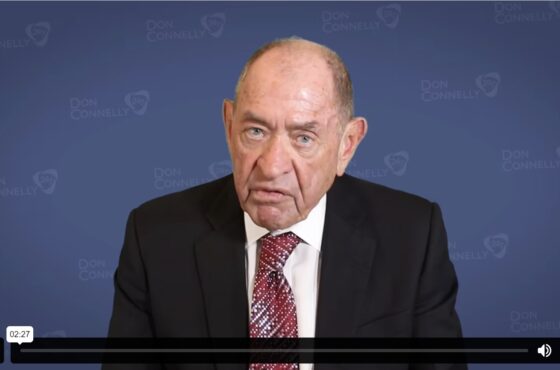Unearthing the Buried Treasure: How Financial Advisors Can Uncover Hidden Objections
 Financial advisors play a crucial role in securing a client’s financial future, but beneath the surface of numbers and charts lie unspoken anxieties and reservations—hidden objections that can derail even the most meticulously crafted plan. Unlike their vocal counterparts, these objections can linger beneath the surface, hindering progress and leading to missed opportunities.
Financial advisors play a crucial role in securing a client’s financial future, but beneath the surface of numbers and charts lie unspoken anxieties and reservations—hidden objections that can derail even the most meticulously crafted plan. Unlike their vocal counterparts, these objections can linger beneath the surface, hindering progress and leading to missed opportunities.
However, by employing specific techniques and fostering a trusting environment, advisors can unearth these hidden objections and build stronger, more successful client relationships.
The peril of hidden objections
Imagine this: you’ve presented a well-researched financial plan to a prospective client. They seem engaged, asking clarifying questions. Yet, they hesitate when it comes to signing on the dotted line. This hesitancy often stems from hidden objections—concerns the client might be too embarrassed, unsure, or simply unwilling to voice directly.
These hidden objections can manifest in various ways:
Vagueness: The client offers non-committal responses like “Maybe later” or “I need to think about it.”
Procrastination: They repeatedly delay making a decision, citing the need for more information or time.
Changing the subject: The conversation veers off track, focusing on irrelevant details or expressing unrelated concerns.
Body language: Crossed arms, averted eyes, or fidgeting can signal discomfort with the proposed plan.
Left unaddressed, hidden objections can lead to lost opportunities, frustrated clients, and wasted time and effort. But by proactively uncovering them, you can:
Build trust: Addressing hidden concerns demonstrates a genuine interest in the client’s well-being, fostering a deeper connection.
Tailor solutions: Understanding the root cause of hesitation allows for a more personalized approach, increasing the plan’s effectiveness.
Close more deals: By proactively clearing roadblocks, you can confidently navigate towards a successful conclusion.
Techniques for uncovering hidden objections
Financial advisors possess a unique toolkit for uncovering hidden objections. Here are some key strategies:
Active listening: Go beyond simply hearing words; pay close attention to tone, hesitations, and unspoken cues. Actively listen by summarizing key points and asking clarifying questions to ensure understanding.
Open-ended questions: Instead of yes/no questions, use prompts like “What are your biggest concerns?” or “Can you elaborate on what makes you hesitant?” Open-ended questions encourage clients to delve deeper and reveal underlying anxieties.
Silence is golden: Don’t be afraid of comfortable silences. They sometimes allow space for reflection after a question prompts the client to voice their true reservations.
Mirroring and labeling: Repeat key phrases or emotions expressed by the client. For example, “It sounds like you’re unsure about the risk level of this investment.” This validation helps clients feel heard and encourages them to elaborate.
Scenario building: Present hypothetical situations that might trigger the client’s hidden objections. For example, “What if the market experiences a downturn in the next year?” This allows them to voice concerns in a safe space.
Addressing hidden objections with confidence
Once a hidden objection is unearthed, address it directly and empathetically. Here are some steps:
Summarize the objection: Reiterate the client’s concern to ensure you understand it correctly.
Provide clarification or education: Address any knowledge gaps or misconceptions that might be fueling the objection.
Offer options: Present alternative strategies or adjustments to the plan that alleviate the client’s concerns.
Focus on benefits: Reiterate how the proposed plan directly addresses the client’s long-term goals and financial security.
Remember, the goal is not to pressure the client but to collaboratively navigate toward a solution that addresses their needs and fosters confidence.
Cultivating a safe space for disclosure
Creating a comfortable environment where clients feel safe to express themselves is crucial. Here’s how to achieve this:
Focus on education, not selling: Position yourself as a trusted guide, not a salesperson. Prioritize understanding the client’s goals and concerns before presenting solutions.
Transparency and honesty: Be upfront about fees, risks, and limitations. Building trust requires transparency at every step of the process.
Non-judgmental communication: Avoid making assumptions or criticizing the client’s financial background or past decisions. Focus on building a future plan together.
Acknowledge emotions: Validate the client’s feelings of uncertainty or fear. Let them know it’s normal to have questions and concerns.
Conclusion
Hidden objections are a natural part of the client acquisition process. By honing your active listening skills, employing the right questioning techniques, and fostering a trusting environment, you can effectively uncover these hidden reservations. Addressing them with empathy, transparency, and a focus on value paves the way for building strong client relationships and achieving long-term success.
Watch this 3-minute video to learn how our 24-step training program can help you take your business to the next level!
Note: One of the modules is dedicated entirely on overcoming objections.
See program details and enroll today!
Available as a self-paced program (always open) or as a 12-week coaching program (open only a couple of times a year) this training will change the way you view your practice and will give you an enormous advantage over your competition. Select your format and enroll now!



